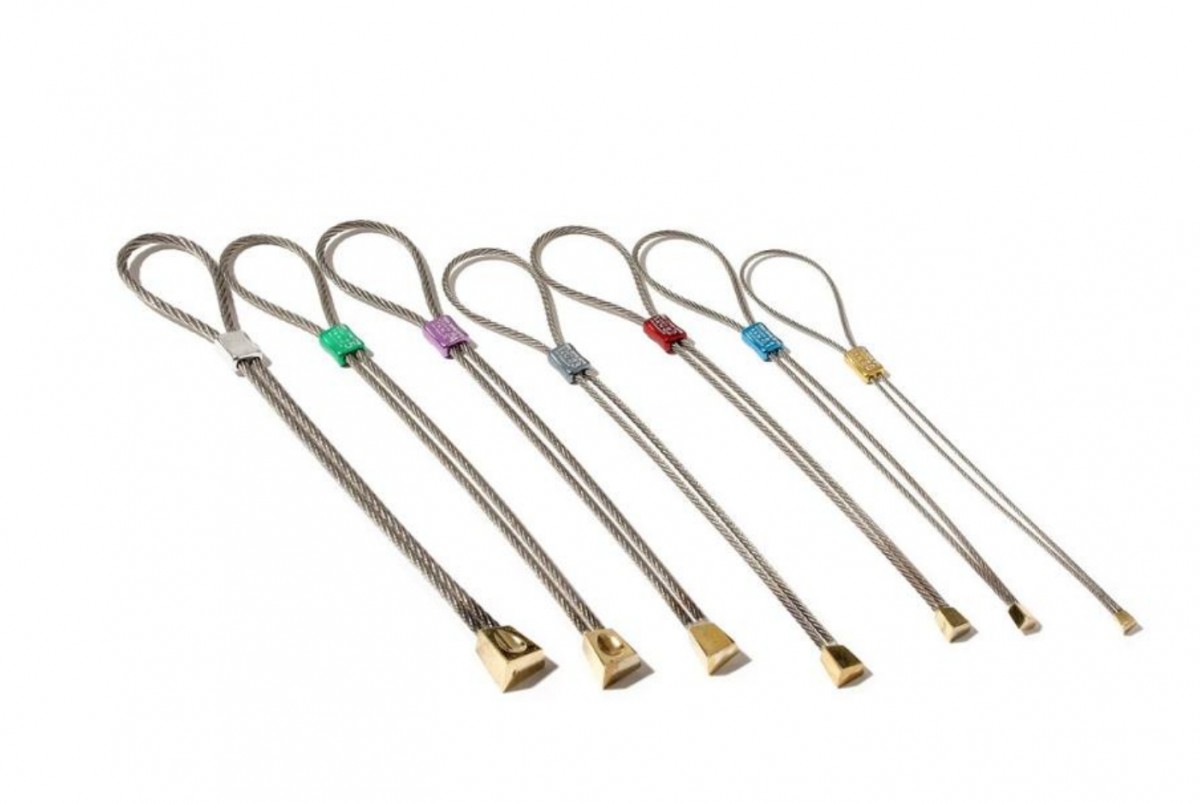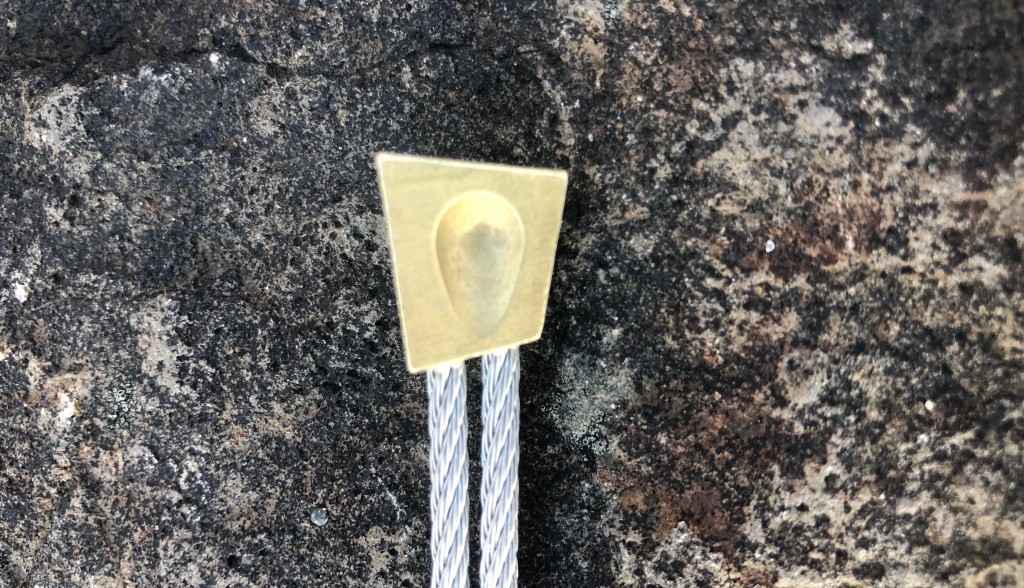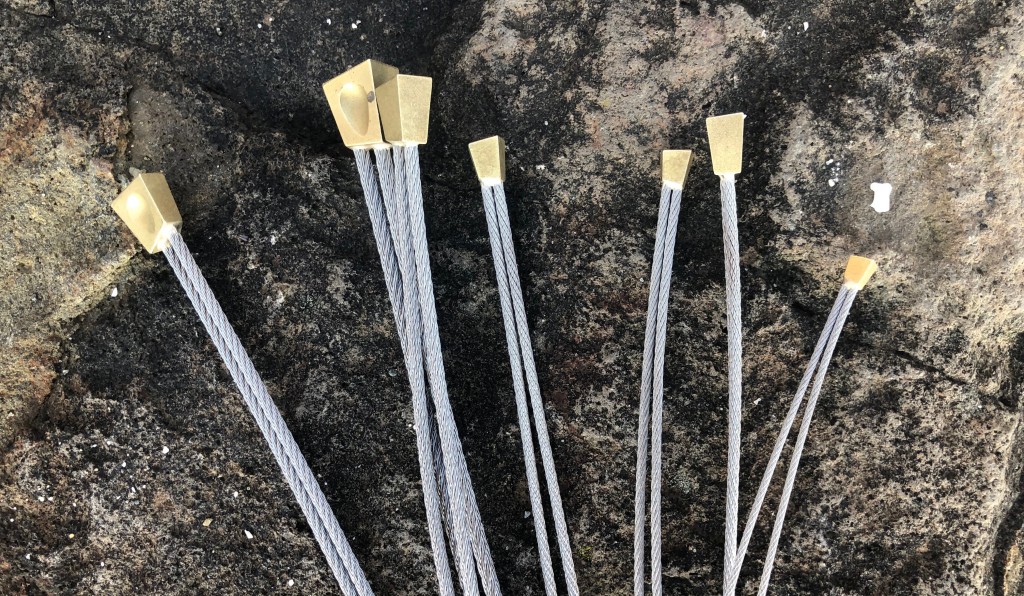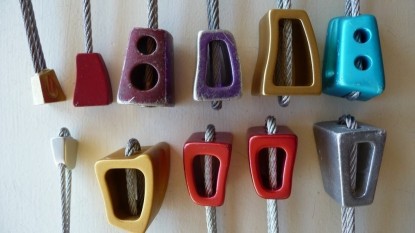DMM HB Brass Offset Review
Our Verdict
Our Analysis and Test Results
From Eldorado Canyon to El Capitan, wherever you need micro-sized protection, these tried and true pieces of protection remain among the absolute best. While their durability isn't the greatest for every day trad climbing, they're tough to beat for their intended use - protecting the hardest to protect micro-fissures on Earth.
Performance Comparison
Flares and Pin Scars
Small spring-loaded camming devices have gotten notably better over the last decade, and more-and-more climbers are leaning toward carrying and using cams over nuts, given equal opportunity. Nuts still are an important part of any climber rack.
As a result of the cam-focused climbing era we are currently in, we rated each nut's performance in flares and pins scars higher than other metrics, since it's these placements where a nut can be perfect while a cam might not even be able to hold body weight. Cams just don't tend to fit as well in smaller pin scars and flares, and thus a nut is required. All offset models certainly do better in these types of fissures, including the DMM Brass Offset, along with the DMM Alloy Offset and DMM Peenut. The DMM Brass Offsets are consistently some of the best performing nuts in small flares and cracks - though it's worth noting that the Black Diamond Offset Micros perform similarly. Besides an offset shape that is tapered more or less to fit old pin scars, both of these products use a softer metal (brass or a similar copper/iron alloy) in their heads to deform to the rock and offer a better "bite" when weighted. Their tiny sizes and offset shapes are why they are essentially mandatory for any big wall or aid climb.
The DMM Peenuts also perform extremely well in small flares and pin scars, and their aluminum heads make them far more durable. However, the DMM HB Brass Offsets (and the Black Diamond Offset Micros) offer a better bite and are produced in smaller sizes. Comparing these options, we'd say the Peenuts are a better all-around trad climbing nut, while the DMM HB Brass Offset is best for aid climbing and the tiniest, trickiest to protect traditionally protected routes.
More Parallel-Sided Cracks
Performance in Featured Rock
Relative to their size the HB Brass Offset performs quite well in more featured rock types, and this is one of their more notable advantages over the otherwise quite comparable Black Diamond Offset Micro. They have a larger and deeper "scope" on the sides more commonly in contact with the rock that does a better job at accommodating more textured, bigger grained, and larger, crystaled rock. We think DMM strikes a nice balance in their design where they left enough room for large-grained rock but kept enough surface area for good purchase in smoother rock types.
Ease of Cleaning
These tiny nuts are NOT easy to clean. This is because of their micro size which makes the heads harder to access, the head's brass material deforms to the rock and the offset shape which means they don't like to be cleaned by pulling up on the cable, as it will promote kinking of the wire below the head. We do think the Black Diamond Offset Micro is ever so slightly easier to clean as they rounded off the deeper front edge of the nut to make it easier to wiggle free.
Durability
Like most micro brass or similar softer alloy nuts, these are not particularly durable. The brass in their heads is certainly far less durable than aluminum models, but even when compared to other brass models, the metal used in these DMMs is notably softer. We think the DMM brass is slightly softer than that of the BD Offset Micro, which technically uses a copper-iron blend that proved moderately more durable. We think if you are looking for a day-in, day-out micro nut for general-purpose trad climbing, we'd go with the aluminum headed DMM Peenuts. However, for aid climbing or thin scary trad climbing where you want every little bit of holding power you can get (coming from the heads deforming on the rock), the DMM Brass Offset holds it down.
Versatility and Use in Other Orientations
These nuts can be placed in two orientations. However, because they are so small, when placing them along their less commonly used axis (with the narrower sides touching the rock), they are NOT very stable. This orientation is mostly for aid climbing or the most desperate of traditionally protected free climbs where it is hopefully nestled along with a bunch of other gear. The second axis is slightly offset to facilitate placing it on the outside of pin scars, and this axis functions very similarly to the Black Diamond Offset Micro. While most folks will hardly use this secondary axis, it is nice and isn't something that works as well with the DMM Peenuts.
Value
The HB Brass Offset are spendy, even when compared to other brass nuts, which are already more expensive than their aluminum counterparts. Are they expensive? Yes. Are they worth it on a big wall or micro protected trad climb? Easily yes, though we think the Black Diamond Offset Micros are nearly as good and cost significantly less. For folks not wanting to spend as much and who are looking for a smaller, more everyday nut, check out the DMM Peenuts.
Conclusion
The DMM HB Brass Offsets are easily one of the very best brass micro nuts on the market - and our Top Pick for a Micro Nut - and perfect for anyone considering a big wall, any aid climb, or a hard, thinly protected free climb. Though expensive and tough to clean, we think they're easily worth the money to have on your rack. If you're in the market for everyday trad climbing or for smaller sized nuts, we'd recommend the still offset DMM Peenuts as they work nearly as well in micro-fissures and pin scars but are significantly more durable. The DMM Brass Offsets are also very similar to the Black Diamond Offset Micros. The brass is softer on the DMMs, which helps them deform to the rock and bite better, but they aren't as durable. The BD Offset Micros are also slightly easier to clean as one of their deeper edges is rounded off, but all of our testers like the DMM Brass for more textured rock due to its deeper "scope."










